- Administrator
- Albums and Singles
 Italian mutant jazz-metal no-wavers Zu have been plying their bludgeoning trade in the underground for a decade, but it seems that they are finally receiving some widespread attention now that they are signed to Mike Patton's Ipecac label. In the past, they have collaborated with a staggering and varied array of folks, ranging from free jazz icons to members of Can, The Stooges, the Ex, Sonic Youth, and Dälek. On Carboniferous, they largely opt to go it alone, although Mike Patton and King Buzzo make somewhat dubious contributions.
Italian mutant jazz-metal no-wavers Zu have been plying their bludgeoning trade in the underground for a decade, but it seems that they are finally receiving some widespread attention now that they are signed to Mike Patton's Ipecac label. In the past, they have collaborated with a staggering and varied array of folks, ranging from free jazz icons to members of Can, The Stooges, the Ex, Sonic Youth, and Dälek. On Carboniferous, they largely opt to go it alone, although Mike Patton and King Buzzo make somewhat dubious contributions.
Zu inhabit the eclectic and adventurous, yet not easily definable, niche made up of artists like Last Exit, Naked City, Massacre, and Ruins. Naturally, they are undeniably proficient instrumentalists (like all of their kindred spirits). However, they work with a fairly limited palette (sax, drums, and bass), so whom they choose to collaborate with has a significant effect on the quality and direction of their albums. In the past, Zu have made some impressive albums with folks like Ken Vandermark and Mats Gustafsson. However, their collaborations here with Mike Patton don't work quite so well (listen to "Soulympics" for rather damning evidence of this). Lamentably, Carboniferous takes something of an unwelcome stylistic detour from their past successes and largely jettisons their previous chaotic free-jazz influence in favor of a highly structured, Helmet-like metallic crunch.
The album starts off impressively enough, as "Ostia" features a heavy fuzzed-out bass line, propulsive and inspired drumming, and some squealing free jazz saxophone pyrotechnics. Unfortunately, however, it quickly falls prey to all of the things that annoy me about this genre: abrupt song shifts, zero subtlety, and no focus on melody or songcraft. Everything is virtuosically tight, of course, but that really cannot carry an album. Also, it is striking that there are not any amazingly intricate (or even just "cool") riffs or solos on this album (although the drum fills on "Erinys" and a few other tracks are intermittently brilliant). If what replaced them was really great, I would probably commend Zu on their restraint and lack of self-indulgence. Instead, the album is loaded with mid-nineties metalcore grooves (sans guitars and an angry shouting person).
Additionally, Luca Mai's saxophone playing is a bit frustrating throughout Carboniferous, as he seems to limit himself to either chromatic squealing and squonking or simple repeating lines that syncopate with the rhythm section. This syncopation would be great if there were some other instrument taking over melodic duties, but there usually isn't. Consequently, many songs feel like really heavy and dexterous unfinished song sketches. Also, instances of melody are few and far between here ("Beata Viscera" is a charitable representation of this predicament), which has the unfortunate effect of making all the songs blur together into one endless mosh part that could pass for a lost recording of a jam between Prong and Morphine.
That said, Zu are an generally an excellent and incendiary band. I'm sure that they would tear my damn head off if I saw them live, but Carboniferous does not document them at their best. I would recommend How To Raise An Ox or Radiale over this or just wait for them to play in your town. I'm sure Zu will get past their current single-minded fixation on being as tight and bludgeoning as possible and return with an amazing follow-up soon. They have few peers in terms of intuitive improvisory cohesion, so this questionable stylistic experiment has probably already been abandoned or evolved upon.
Samples:
Read More
- Administrator
- Albums and Singles
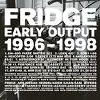 Over ten years after the last of these tracks were recorded the members of Fridge have selected their favorite songs from their slew of releases on Output Recordings, the label that first championed them. Luckily they turned out to be my favorites as well. With headphones on and 80 minutes of their choicest cuts cued up, it is hard to be unhappy. The relentless pace Fridge showed, in both their rhythms and sheer number of songs recorded over a two year period, would exhaust the creative energies of many musicians. They were just getting warmed up. Listening back, after a decade of new developments and notable side projects, we can trace the trajectory they have followed, and hear within these songs, many points of origin.
Over ten years after the last of these tracks were recorded the members of Fridge have selected their favorite songs from their slew of releases on Output Recordings, the label that first championed them. Luckily they turned out to be my favorites as well. With headphones on and 80 minutes of their choicest cuts cued up, it is hard to be unhappy. The relentless pace Fridge showed, in both their rhythms and sheer number of songs recorded over a two year period, would exhaust the creative energies of many musicians. They were just getting warmed up. Listening back, after a decade of new developments and notable side projects, we can trace the trajectory they have followed, and hear within these songs, many points of origin.
Listening to this collection is like having a mix tape of all the best tracks taken from the originals, but with the bonus of six more, previously unreleased. Of those six only one is longer than a minute. The five short pieces tacked on at the end exhibit the same textural beauty as “Lign.” I always wished that song had been longer, but its concentrated nature makes it more of a haiku than a sonnet, and as such it is perfect. The five short pieces, like “Eff” and “Arr” also show that hardcore no longer has the sole market for songs that clock in at less than a minute. They have a post-punk edge and frenetic energy that make similar, and barely longer songs like “Cassette” (at a minute and a half) so enjoyable.
Knowing they can keep a song as short as it needs to be shows that Kieran Hebden, Adem Ilhan, and Sam Jeffers are in tune to the inner source from which their music flows. They listen with an ear open to the daimon guiding their skilled hands, making a song what it wants to be, not what they think it needs to be based on formulas and ideas such as marketability. They are equally at home crafting near epic length songs as they are with shorter fare. In this realm they allow musical events to spread out, creating a headspace to be lost in; “Angelpoised” is such a song. The driving rhythm of an 808 brings on the trance while simultaneously building forward momentum. Fluttering electronics are blurred around the edges and tight strings keep an uplifting melody. The textures are nothing short of blissful.
Gurgling keyboards and trumpet blasts are prominent on “Triumphant Homecoming,” the longer of the previously unreleased songs. Spastic drums are layered over top of a funky bass rhythm, giving happily unhinged sensibilities to what amounts to a musical ticker tape parade. “For Force” carves out a similar vein of gold, giving quite a rush.
There is no sifting involved when listening to this retrospective, no skipping around to find a good song. Each time the disc was put into the player it inevitably played to conclusion. What is more, boredom and tedium never set in. I usually expect to get bored in a culture so wealthy with music, much of it second rate. Here I found a polished gem among piles of CDs that seem little more than copper shekels. Fridge show that a lot can be done with the simple ingredients of a drum kit, bass, and guitar. When they add a smattering of effects, drizzle in some keyboards and drum machines, and mix it straight to cassette the possibilities are as exciting as they are endless. Ten years down the road these songs remain vibrant and strong.
samples:
Read More
- Administrator
- Albums and Singles
 Led by Dave Heumann, Arbouretum doesn't beat around the bush. Out of the gate they make it very clear exactly what rock 'n' roll means to them: huge melodies, rolling rhythms, noisy solos, and few introspective moments for good measure. Over eight concise songs, the band wrings the guitar for everything its worth and then some.
Led by Dave Heumann, Arbouretum doesn't beat around the bush. Out of the gate they make it very clear exactly what rock 'n' roll means to them: huge melodies, rolling rhythms, noisy solos, and few introspective moments for good measure. Over eight concise songs, the band wrings the guitar for everything its worth and then some.
There's nothing very complicated about Song of the Pearl and that's a great part of its appeal. The opening song, "False Spring," launches the album into epic rock 'n' roll territory without a hiccup or second thought. With its galloping rhythm and soaring vocal melodies, Arbouretum start with a clear musical declaration and they never deviate from it. They're not as psychedelic as expected from previous recordings, but what they lack in hallucinatory power they more than make up for with pure muscle and great songwriting. In fact, every song on here benefits from a tighter, more direct approach. The bass lines are thick and impenetrable, the solos are more chaotic than structured, and the verses are potent slabs of syncopated rhythm. Heumann contributes line after line of confident singing, too; his lyrics are vividly and potently delivered on each song, sounding a bit more bold than he did on Rites of Uncovering. This group has the same kind of untamed and messy power you'd expect from a band like Crazy Horse, but there's some very un-garage influences on the record.
Song of the Pearl isn't just a brute force experience. In fact, the first half of the album is smoky and atmospheric; blues and folk music both figure heavily into the songs that follow "False Spring." The title song is reminiscent of Fairport Convention in some ways, with elegant string arrangements supporting Heumann's sentimental lyrics and the band's clean, simple accompaniment. In contrast, "Another Hiding Place" is a simmering electric piece that rests on the strength of a strong rhythm section and simple vocals; it never quite erupts, but it isn't a powerhouse of a song in the way that some of the other tunes are. The point is that the album starts big, but is kept tight and diverse thanks to the numerous approaches Arbouretum bring to their guitar-centric songwriting.
The second half of the album is where all the driving energy of the first song continues. On "Infinite Corridors," drummer Daniel Franz is let loose; his cascading fills and nuanced dynamics add a great deal to this song. Not content to simply keep time, his contributions mean just as much to Song of the Pearl as the guitars do. His drumming from start to finish is considerate and economical; with repeated listening it becomes obvious just how much he adds to the music. The record concludes with a stunning take on Bob Dylan's "Tomorrow is a Long Time." Keeping the original's brooding and lonely quality, Arbouretum amplify it and lend a deep, doom-like rumble to its quietude. Reverberating guitars carry the song's lead melody into slow, lonesome territory and those ringing strings help close the album on a desolate and retrospective note. It's a very affecting song and one of the best on the record. If any complaints can be made, it's that some of the production is a little flat. The upbeat songs on the disc all share a similar aesthetic, which is to be expected, but had the production been opened up a little bit the album might have benefitted.
samples:
Read More
- Administrator
- Albums and Singles
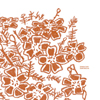 Consisting of only seven spare pieces lasting just over 25 minutes in length, Tenniscoats find themselves having to make a lot out of a little on this disc. That the duo of Saya and Ueno are displaced from their Tokyo home base and immersed in the Amazon rainforest for a series of essentially live recordings seems as though it would leave even less room for error. Yet this distillation results in a poignant intimacy that seeks and finds its own niche in the realm of location-based music interactions.
Consisting of only seven spare pieces lasting just over 25 minutes in length, Tenniscoats find themselves having to make a lot out of a little on this disc. That the duo of Saya and Ueno are displaced from their Tokyo home base and immersed in the Amazon rainforest for a series of essentially live recordings seems as though it would leave even less room for error. Yet this distillation results in a poignant intimacy that seeks and finds its own niche in the realm of location-based music interactions.
Most clearly on display here is Tenniscoats' clever and cautious instrumentation, which unfolds the airy and peaceful qualities extrapolated on. "Ichinichi" presents each guitar strum or harmonica breath as its own statement whose presence is in constant contact with the chirping birds surrounding them. The result is an odd musical space that hovers somewhere between the gentle textures of musique concrete and the spatial awareness of Japanese gagaku.
Yet the music is not without motion. Instead of just attempting to interact with their environments throughout here, often it sounds as though they've worked out small scale pop tunes which they must try and fit in between the sounds of their surroundings. "Ninichime" sees a guitar and small organ interacting by a roadside. As the small lines interact in a near tropical breeze, the trucks nearby drift by like waves on a shore. It's a nifty effect, and one that avoids the potentially pallid results it could attain with the strength and conception of the material.
This is crucial, as not all bands could pull this out without it sinking into some sort of folky "live in the forest of life" schlock. But these guys pull it off and then some, and there is a sincerity to these works and their performances that keeps the entire length afloat with small surprises. Special mention on this front must be made of co-conspirator Lawrence English, who recorded and produced the album. His delicate balance of cavernous water dripping among light pattering rhythms and lulling pipes on "Timeless" never lets any sound source take hold on any other.
The following "Do" exhibits Saya's vocal prowess with small, syllabic motives among drifting water, while "Sitting By" features a finger-picked guitar line and clacking pulses among forest birds; the result is one of the most cohesive, poppy pieces here, as Ueno's guitar provides a near soundtrack to the picturesque setting it implies, pushing it to the background before English once more fades it in to let the work slip back towards the wood.
"Hajimari / Owari - Dream Is Refreshing" closes the disc with what is likely the least environmental work here. Rather, the duo's full sound drifts outward as small organ lines, guitar tappings and Saya's lilting vocals draw themselves along with unending beauty. When the organ goes dark and Saya recites spoken words, her voice, like the bird calls around her, speak volumes whether translatable or not.
samples:
Read More
- Administrator
- Albums and Singles
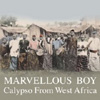 Done right, calypso conveys succinct unpretentious pleasure. In the wrong hands, though, it can be murderously bad. Thankfully, there is no over production or lyrical inanity to interfere with the simple, timeless enjoyment of this consistent collection from 1950s West Africa.
Done right, calypso conveys succinct unpretentious pleasure. In the wrong hands, though, it can be murderously bad. Thankfully, there is no over production or lyrical inanity to interfere with the simple, timeless enjoyment of this consistent collection from 1950s West Africa.
Honest Jon's have released a ton of worthwhile compilations recently. Sprigs of Time was packed with variety, and Living is Hard uncovered a forgotten creative history of Caribbean immigrants in Britain. London Is The Place For Me documented the 1950s Soho scene and now Marvellous Boy offers a unique snapshot of the West African musical landscape from the same period.
Until music becomes a gentically modified nightmare disparate seeds will be blown off course and bloom in unexpected places. Calypso was first recorded in the Caribbean in 1913 (Lovey's String Band). Its West African counterpart did not blossom until the early 1950s in Freetown, Sierra Leone, in the hands of both Ebenezer Calender and also Famous Scrubbs. Ebenezer has four tracks here, all are fabulous, fleetfooted odes to free living. Famous Scrubbs has two tracks: the opening "Poor Freetown Boy" and the unconvincingly self-depreciating "Scrubbs Na Marvellous Boy". Scrubbs may claim to be an average Joe the Calypso Singer but I'm not buying it!
In a collections as solid as this there are gems at every turn. Steven Amechi gives delightful, if outdated, wooing advice on "Nylon Dress". Presumably, in the 1950s, nylon was hip, and ironing [the more comfortable cotton] was square. Bobby Benson And His Combo gives us a gorgeous call and response tune "Taxi Driver (I Don't care)" as well as an almost-instrumental "Calypso Minor One" and the breezy genius that is "Gentleman Bobby" - a message to husbands and parents not to let their wives or daughters be exposed to either the alluring calypso rhythms or the overwhelming personal magnetism of Bobby Benson! They can't say they weren't warned...
And so it goes, weaving highlife, swing, military brass bands, Afro-Cuban jazz, into a hell of a compilation. I like that the majority of tracks are sung in English but the others are easily infectious and as relaxing as soft waves trickling over aching feet. My favorites (for today) are E.T. Mensah And His Tempos Band's tale of unusual love "The Tree And The Monkey" and The Rhythm Aces spacey instrumental "Mami".
Before the Caribbean musical influences in West Africa were all but extinguished by US Soul there was still time for the majestic Godwin Omabuwa to cut some essential sides. His "Dick Tiger's Victory" commemorates the bout which made a World Boxing Champion from Nigeria. Omabuwa's approach to vocals on this track sums up the atmosphere of this disc. He shows scant regard for precise rhythm and exact metre and the effect is as if we were being serenaded by the kindest, hippest official from the Nigerian Tourist Board while being massaged by ultra-hypnotic uber-beings from our most delightful dreams.
Some compilations of early Calypso, such as Calypso Calaloo, are so good that I thought they could never be matched. But Honest Jon's have added to the highest order of this simple music of heartbreaking celebration.
samples:
- Godwin Omabuwa - Dick Tiger's Victory
- Famous Scrubbs - Scrubbs Na Marvellous Boy
- E.T. Mensah - The Tree and the Monkey
Read More
- Administrator
- Albums and Singles
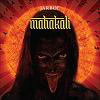 Jarboe is an artist that is very much at the mercy of her collaborators; a strong band behind her and she flourishes but accompanied by a weaker artist she flounders. This has made for a patchy career, the dizzying power of her performances with Swans has not been a constant presence in her work but in recent years her work with Neurosis and Larsen has shown that her drive is still there. Her latest album sees her play with a group that can be every bit as crushing as any other modern metal band and also allow Jarboe’s softer side to shine through.
Jarboe is an artist that is very much at the mercy of her collaborators; a strong band behind her and she flourishes but accompanied by a weaker artist she flounders. This has made for a patchy career, the dizzying power of her performances with Swans has not been a constant presence in her work but in recent years her work with Neurosis and Larsen has shown that her drive is still there. Her latest album sees her play with a group that can be every bit as crushing as any other modern metal band and also allow Jarboe’s softer side to shine through.
Jarboe’s group for Mahakali includes all three members of Dysrhythmia as well as Josh Graham from Red Sparrowes/A Storm of Light/Neurosis. Thus, the heavier parts of Mahakali sound like a typical Neurot Records band but thankfully never quite as derivative. Strings by way of Julia Kent and Kris Force and the inclusion of decidedly non-metal rhythms expand the range of the music which allows Jarboe to try out lots of different styles of vocals throughout the album. This is a good and a bad thing. Yes, there are some great performances by her on many of the tracks and arguably they are some of her best. Equally, there are a couple of absolutely dreadful moments that do their best to sour one of her best albums in years. Jarboe herself is to blame for only one such moment as she attempts some bizarre child-like out of key mewling on “Bornless,” which completely sits askew on top of the music (which is terrific).
Luckily this sort of outburst is a rarity and elsewhere she puts on a stunning performance whether it is her commanding lead vocals on songs like “The House of Void (Visceral Mix)” or her haunting backing vocals on the pieces where she takes a backseat. Her intensity is matched by the music, her backing musicians reciprocating her performance perfectly and vice versa. The last times she has been matched by such a confident band was with Neurosis and before that with Swans. It says a lot that she has worked with many different artists from the extremes of rock but only a few can keep up with her. She has always had a powerful and decisive voice so it is no surprise that on “Ascend,” when she sings of the sky opening up, she sings with such fervor and energy that it is difficult not to go outside and check that the sky is still there.
Jarboe has invited two other vocalists to contribute to a track each to varying effect. Attila Csihar’s vocals on “The Soul Continues” are not his best but in the context of the song they work well enough. Once the group gets their groove on, the piece quickly goes from being just a showcase for Csihar’s menacing growls to being a truly heavy and ominous piece. The other guest vocalist on Mahakali came as a surprise to me as Phil Anselmo strikes me as the antithesis of Jarboe; the “is he/isn’t he racist?” figurehead of meathead metal is a million miles away from what I would expect her to be associated with. If he was a good vocalist I could look past his dubious persona but his voice has not improved since his days in Pantera or Down and “Overthrown” features some of the most overwrought and hammy vocals ever committed to disc. Yet, as with Csihar, the song does blossom when the music gets going and once Jarboe starts wailing in the background it is amazing.
One annoying thing about the album is that there are three different versions depending on the territory and packaging. The US digipack version (the one this review was based on) is different to the US jewel case version and both are again different to the European version. This is unnecessary and not what I would expect of the artists involved. I am not angry, just disappointed.
Overall, Mahakali is one of Jarboe’s best albums but is unfortunately marred by some less than stellar vocals on some tracks. However, these are mainly out of Jarboe’s hands and the good parts outweigh the bad by a considerable margin. Jarboe should definitely do a repeat performance with these guys as they are a perfect fit for her style of singing.
samples:
Read More
- Administrator
- Albums and Singles
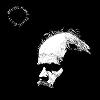 On the cover of his latest album Will Oldham's portrait looks more like a bare skull than a human head, the sleeve is reminiscent of Neil Young's Tonight's the Night. Because of this grim cover and the album's portentous title I was expecting a much darker affair, but this is anything but dark. Oldham has sketched out a country album that has far more in common with the cheerier parts of Young’s Nashville recordings. Employing over a dozen musicians for these sessions, Oldham has made his slickest album yet but without sacrificing the soul of his music.
On the cover of his latest album Will Oldham's portrait looks more like a bare skull than a human head, the sleeve is reminiscent of Neil Young's Tonight's the Night. Because of this grim cover and the album's portentous title I was expecting a much darker affair, but this is anything but dark. Oldham has sketched out a country album that has far more in common with the cheerier parts of Young’s Nashville recordings. Employing over a dozen musicians for these sessions, Oldham has made his slickest album yet but without sacrificing the soul of his music.
The kitchen sink production could have been a disaster but aside from the odd over-arrangement (is a saxophone ever necessary in country music?), the large range of instruments being used works in the music’s favor. The band is culled from Oldham’s touring group of last year, which is normally a good sign as the musicians have time to build up a rapport before entering the studio. The band sounds like they have been playing together for many years rather than just one. Emmett Kelly’s guitar provides a mainstream country confidence as a foil for Oldham’s more rustic flair. While Jennifer Hutt’s violin and occasional pedal steel from Greg Leiscz pushes the music further into a typical Nashville sound, the inclusion of accordion and marimba give the music a feel that escapes the traditional borders of country music.
Without doubt this is the kind of album that could serve as a crossover for Oldham to a new and more commercial audience. His lyrics are safer than they have been in the past and the smooth production makes the songs easier to swallow. However, to suggest that this is some form of selling out on his behalf is silly. I always got the feeling that Oldham would make a straightforward country album if he could and like the aforementioned Neil Young, his foray into straight country has not come at a cost to his integrity. The songs here are as strong as ever (and it is a marked improvement on the somewhat lacklustre Lie Down in the Light) but while there is not a bad tune on Beware, I must admit that some of them are better than others. “My Life’s Work” takes a lot of the joyous fire that has been present in his live performances with jubilant lyrics to back up those flames. “I am Goodbye” sees his sense of humour come through, belting out the somewhat grisly lyrics with good spirit.
The rough edges may have been planed off but Oldham’s charm still shines through these polished recordings. Beware shows his Bonnie ‘Prince’ Billy character in decidedly less morbid form than the man who sang about being a wolf among wolves. Here he doesn’t see a darkness, he sees a light. Anyone still expecting the Bonnie ‘Prince’ Billy of ten years ago would be better served ignoring Beware but anyone who genuinely enjoys good songs could do far worse than listen to this.
samples:
Read More
- Administrator
- Albums and Singles
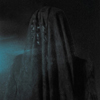 When did anything slow, dark, and covered in reverb become "doom"? Perhaps it is the fault of those Sunn O))) kids, but in my day we called this dark ambient, and we wore onions on our belts and walked to school up hill, both ways. This "doom" album definitely has the darkness and bleak sounds that characterize the genre (and dark ambient as well), and being a Norwegian project, there’s even more darkness. The problem is, for all its miasma and drone, it isn’t functionally different than a lot of other projects that tread similar sludgy, opaque waters.
When did anything slow, dark, and covered in reverb become "doom"? Perhaps it is the fault of those Sunn O))) kids, but in my day we called this dark ambient, and we wore onions on our belts and walked to school up hill, both ways. This "doom" album definitely has the darkness and bleak sounds that characterize the genre (and dark ambient as well), and being a Norwegian project, there’s even more darkness. The problem is, for all its miasma and drone, it isn’t functionally different than a lot of other projects that tread similar sludgy, opaque waters.
The opening "Tunnel Of Love" starts with field recordings of urban menace: squealing metallic scrapes, emergency sirens and a few metric tons of reverb covering everything. Sounds continue to become deeper and more menacing, ominous hums and metallic clattering like an evil gamelan lead to an uneasy rhythm. The swells continue to just float ominously throughout before everything fades away quietly.
"Mystery Man" opens with delayed metallic guitar shards that cut through, and then just linger a bit, allowing the vestigial feedback elements to drone on and on. The sound and concept here is good, but the problem is that it is allowed almost too long to build and segue into the more complex tones and reverbed shrieks. It is a good idea that is too slow in its execution, and the payoff isn’t really as satisfying as the long build-up would indicate.
The longest track here, "Candle Light Dinner Actress" fares better, opening with cannon like thuds in the distance, processed string-like tones slowly weaving around the sparse ambience. In this case the length and slow pace is an asset, allowing a more diverse set of sounds to intermingle, such as the high register plucked strings and reverbed soaked saxophone notes. The track fades into subtle, quiet passages before roaring back with harsh, dissonant squeals and noise blasts.
The shorter, closing track, "Last Light" is more melancholy than the darker preceding ones, it is based more on a sustained hum rather than the layered structure of the rest of the album, based on dark processed strings and dark drones. Over the length of the preceding two tracks, this would probably be too static, but in the shorter duration it works better, and is one of the more captivating tracks here.
The problem with this album is that it simply doesn’t do anything that a legion of other artists haven’t done before. I’m not sure why this is suddenly labeled as "doom", but it fits in with the pantheon of dark ambient music of the mid-1990s that are difficult to remember specifically bands or albums, but almost anything could be easily traced to Bill Laswell somehow. This has the same feeling: it’s a nice take on dark, bleak music, but isn’t enough to stand out from the crowd, and probably won’t be memorable in five to ten years.
samples:
Read More
- Administrator
- Albums and Singles
 Bryn Jones had a work ethic that verged on frightening and supernatural. Despite his death at the relatively young age of 38, he managed to complete over 90 albums (not counting reissues). Unsurprisingly, the handful of hapless record labels that supported him during his life could not possibly keep up with the deluge of material that he continuously submitted. As a result, Muslimgauze continues to be one of the most prolific entities in music, despite the fact that its sole member has been dead for a decade now. Much more striking is the fact that the vaults still contain some great and fully realized material.
Bryn Jones had a work ethic that verged on frightening and supernatural. Despite his death at the relatively young age of 38, he managed to complete over 90 albums (not counting reissues). Unsurprisingly, the handful of hapless record labels that supported him during his life could not possibly keep up with the deluge of material that he continuously submitted. As a result, Muslimgauze continues to be one of the most prolific entities in music, despite the fact that its sole member has been dead for a decade now. Much more striking is the fact that the vaults still contain some great and fully realized material.
Bryn Jones completed Sycophant Of Purdah ("Purdah" is the practice of preventing women by being seen by any men that are not their husbands) in 1994, but he changed his mind after submitting it and decided to release a different album in its place. It is amusing that he had to pick and choose which albums would actually see release, as he still managed to put out six that year (two of which were double albums). Jones' biographer Ibrahim Khider describes Purdha as the "missing link" that connects Muslimgauze's more industrial albums (Izlamaphobia, Zealot, Silknoose, etc.). I will have take his word for that, as acquiring my own comprehensive understanding of Muslimgauze's creative arc would delay this review several months. (On a related note, there is a Muslimgauze biography being released by SAF Publishing...someday (it is now delayed indefinitely). I hope it eventually sees the light of day, as I have long found Jones to be one of the most compelling and bizarre figures in contemporary culture.)
The aberrant opener, "Jericho Loop-Bin Duplicator," combines a decidedly non-Middle Eastern-sounding breakbeat with a thick, funky bass line. Bryn Jones clearly came to party, as the only clue that this is even Muslimgauze at all is that indecipherable (presumably Arabic) radio broadcast snippets keep wandering into the mix. Despite the general absence of weirdness/darkness, it is a pretty awesome and heavy groove.
While the playful and funky tone of "Jericho Loop-Bin Duplicator" is unique to that track, it still fits comfortably with the rest of Purdah in being heavily (almost exclusively) rhythmic. In fact, musical accompaniment on this album is extremely minimal and mostly limited to vague ambiance buried low in the mix. I initially thought this made the album feel like a series of very repetitive and sparse unfinished song sketches, but after a few listens I found Purdah to be quite compelling and hypnotic. Also, when I eventually listened to it with headphones, I realized the percussive loops were not completely static and that constant subtle shifts were occurring in and around them.
The whole album is quite strong, but I found the harsher, more industrial tracks to be more immediately memorable and engrossing than the ethno-percussion ones (although the addition of droning sitar and speech fragments in "Dupatta" stands out quite nicely). "Mossad Evil" combines a heavy, rumbling groove with some sort of strange liquid-y sucking sound and a somber violin loop, while the title track transforms Arabic percussion into a crushing and insistent mechanized groove with a somewhat shrill wavering tone panning around deep in the mix.
I am a bit curious about what Jones was trying to convey thematically with this album. Historically, I have completely disregarded the political aspect of Muslimgauze, but I have since become fascinated upon learning that Jones issued albums almost as real-time reactions and commentaries on unfolding Middle Eastern events. Now that albums conceived in the distant past are being released, I was expecting an odd temporal disconnection. I didn't find one here, but neither could I find a unifying theme among the song titles (traditional Persian music and poetry, Indian scarves, the Mossad, genetic engineering, etc). Enigmatic.
Sycophant of Purdah is a worthy addition to the Muslimgauze oeuvre. It is certainly less melodic, strange, and dark than many of Jones' more celebrated releases, but it is also extremely listenable and mesmerizing. I hope the rest of albums sifted from Jones' mountainous backlog of material for Staalplaat's archive series are similarly excellent—this release makes it clear that they are far from scraping the bottom of the Muslimgauze vault.
Samples:
Read More
- Administrator
- Albums and Singles
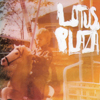 While I do not have any particular animosity towards Deerhunter, I've always felt that the enthusiasm they generate seems to be disproportionate to the quality of their music. Consequently, my expectations for guitarist Lockett Pundt's Lotus Plaza solo project were not especially high. I turned out to be pleasantly surprised though. He has managed to produce a couple of memorably warm and artfully blurred pop gems here. I suppose I owe him an apology, but first he has to apologize for sabotaging his debut album with so much filler.
While I do not have any particular animosity towards Deerhunter, I've always felt that the enthusiasm they generate seems to be disproportionate to the quality of their music. Consequently, my expectations for guitarist Lockett Pundt's Lotus Plaza solo project were not especially high. I turned out to be pleasantly surprised though. He has managed to produce a couple of memorably warm and artfully blurred pop gems here. I suppose I owe him an apology, but first he has to apologize for sabotaging his debut album with so much filler.
Kranky
The album's cover (a hazy, washed-out photo of a young boy on a rocking horse) provides an excellent clue to the tone of the music contained within. This is a summery, soft-focus affair that evokes vague feelings of warmth and nostalgia. At least it does during its better moments, when it sounds vaguely like how I imagine The Jesus and Mary Chain would've sounded if they'd relocated to California and given up heroin for bongs and beaches.
"Red Oak Way" starts the album in strong and attention-grabbing fashion: a simple garage rock drum pattern leads into a steadily escalating swell of chiming arpeggios, melodic vocals, and lazy endlessly repeating and wordless backing vocals. While the track has undeniable immediacy and catchiness, repeated listens reveal additional depth (many studio-tweaked percussion flourishes and vocal tracks that pile-up and harmonize beautifully) that I did not expect. This is important and conveys to me that Lockett Pundt is no fool. The sleepy, blurred feel of The Floodlight Collective required Pundt to reverb everything to death (especially the vocals), which causes the songs to suffer greatly in character, immediacy, and general ballsiness. However, the album’s inherent shortcomings are (almost) ingeniously compensated for by muscular drums, thick propulsive bass lines, and dub-inspired studio wizardry. This approach works extremely well here, but unfortunately the opening track is the best on the album.
The second track, “Quicksand,” is also noteworthy, although I initially found it to be a disappointment. It starts off with too much clutter and sounds like a failed, less melodically gratifying variation of the “Red Oak” formula. However, after about two minutes, Lundt surprised me by dropping all the tracks of shimming guitar noise and leaving only shuffling drums and a simple and clean melancholy guitar part. The effect is quite striking and makes me forgive the song’s clumsy start. Then the roaring, ringing, and guitar layers start piling up again, but this time they work beautifully and the song builds to a lazy crescendo of sorts.
"Sunday Night" begins in spectacular fashion with throbbing and squelching electronic percussion coupled with repetitive, minimal, Steve Reich-y ringing guitar and a simple melodic bass line. This groundwork never changes, but is slowly built up with layer after gauzy layer. A complex arsenal of feedback, noises, swooping guitars, and mournful vocals burbles in and out of the mix and relentlesslessly builds to a climax of uncharacteristically raw and melancholic harmonized vocals. Oddly, it never coheres into a truly great song, but Pundt certainly manages to pack more awesome sounding stuff into one song than many bands have on their entire album.
One striking thing about The Floodlight Collective is that there seems to be two strongly conflicting impulses at work here. The vocals are sleepy and mumbled-sounding, buried in the mix, and absolutely swathed in reverb, which renders most attempts to decipher the lyrics or connect with the songs utterly hopeless. Nevertheless, the songs are extremely melodic and tightly structured and the omnipresent tambourine and rockabilly-flavored drumming can be best described as "bouncy". In fact, the whole album is unexpected driven by the rhythm section- not at all what I would anticipate from a guitarist's solo project. Pundt's aesthetic seems to lie somewhere between self-sabotaging indie pop and drone music (but for parties). Either way, it works quite well on the poppier tracks.
Lamentably, the album wavers in quality a bit during more instrumental, "atmospheric" moments like “These Years” and the title track. There is nothing particularly unfortunate about them, but they veer into territory that other artists have tackled more impressively and they tend to drain the album's momentum. The fatal flaw of the album is, perversely, its own aesthetic. Despite his best efforts, Pundt’s reverb-mongering causes the album to feel somewhat endless and same-y. When heard on their own, songs like “Red Oak Way” and “Sunday Night” are unique, head-turning, and wonderful, but attempting to listen to this entire album is an endurance test that will make those around you beg for something else to be put on. This could have been an absolutely scorching EP.
Samples:
Read More
- Administrator
- Albums and Singles
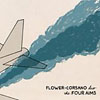 Mick Flower and Chris Corsano are no newcomers to the world of freely improvised music, and their numerous accolades more than summarize their collective achievements. Yet the two musicians play in such a broad spectrum of situations that sometimes it is difficult to tell just what the core of their sound is. On their second full length as a duo however, they are stripped of any external distractions in favor of head-to-head improvisational conversations, a setting that both thrive in.
Mick Flower and Chris Corsano are no newcomers to the world of freely improvised music, and their numerous accolades more than summarize their collective achievements. Yet the two musicians play in such a broad spectrum of situations that sometimes it is difficult to tell just what the core of their sound is. On their second full length as a duo however, they are stripped of any external distractions in favor of head-to-head improvisational conversations, a setting that both thrive in.
The album opens with a bang as Corsano's drums and Flower's virtuosic Japan Banjo (or Shaahi Baaja) explode forth for "I, Brute Force?," a propulsive shredding session that finds fertile exploratory ground in the brief gaps allotted by Lightning Bolt levels of energy. Corsano's drumming can rival anyone's, and his playing here is absolutely frenetic, bounding across, over and through Flower's arbeggiated shards with reckless confidence. There are few sounds so unique in improvised music today, and the duo's perfection of this kind of head-on freedom is rarely matched in any circle. Beneath all of the notes—and there are plenty—is an overall shape the form of which unravels with patience and (relative) clarity, but whose moment to moment discourse of ideas is that of a structure far briefer in length.
If the first track represents the duo's forte, the rest of the album displays its depth. Both members' instrumentation extends beyond their usual associations, as Corsano variously picks up a melodica and cello while Flower also plays tanpura and organ. This provides some necessary pockets for the two to extend into and they take full advantage of it. On "The Three Degrees of Temptation," Corsano's pot and pan drum kit rattles, shakes and chimes beneath Flower's nimble string manipulations, creating an eerie and amorphous spatial realm.
This sparse sound is counteracted by the thick duel-string drones on the following track, "The Drifter's Miracles." True to Flower's Vibracathedral Orchestra roots, the number finds the ample dialogue to be had between La Monte Young's drone experiments, contemporary free drone music and Japanese shamisen. Corsano's cello undulates underneath while Flower ornaments his moves with layer after layer of shapes that change effortlessly despite the consistent density of sound.
The duo return to what appears to be their signature sound on "The Beginning of the End," although this time the proceedings maintain a distinctly Skaters-like feel as Corsano's drums patter about beneath Flower's riffage. While the approach may be the same, it's encouraging—though not surprising—that the unit can extend it into different modes through what they're playing rather than how loud or fast they are.
The closing track, "The Main Ingredient," is the longest here, and the duo takes advantage of the length to explore depths previously only hinted at. Building into a frenetic and undulating weight, the unit moves with a singular vision all too rare. Instant response is one thing, but Flower and Corsano can shift mood along with tempo, atmosphere with melody and approach with feel. This sort of elasticity and balance results in some of the most distinctly surprising and exciting sounds happening today. And the long raga-like fade out at the end? It only encourages another go.
samples:
Read More